AND COMPANY UPDATES
Talking about blockchain, web and
software development with expert knowledge.
Talking about blockchain, web and
software development with expert knowledge.
 All articles
All articles
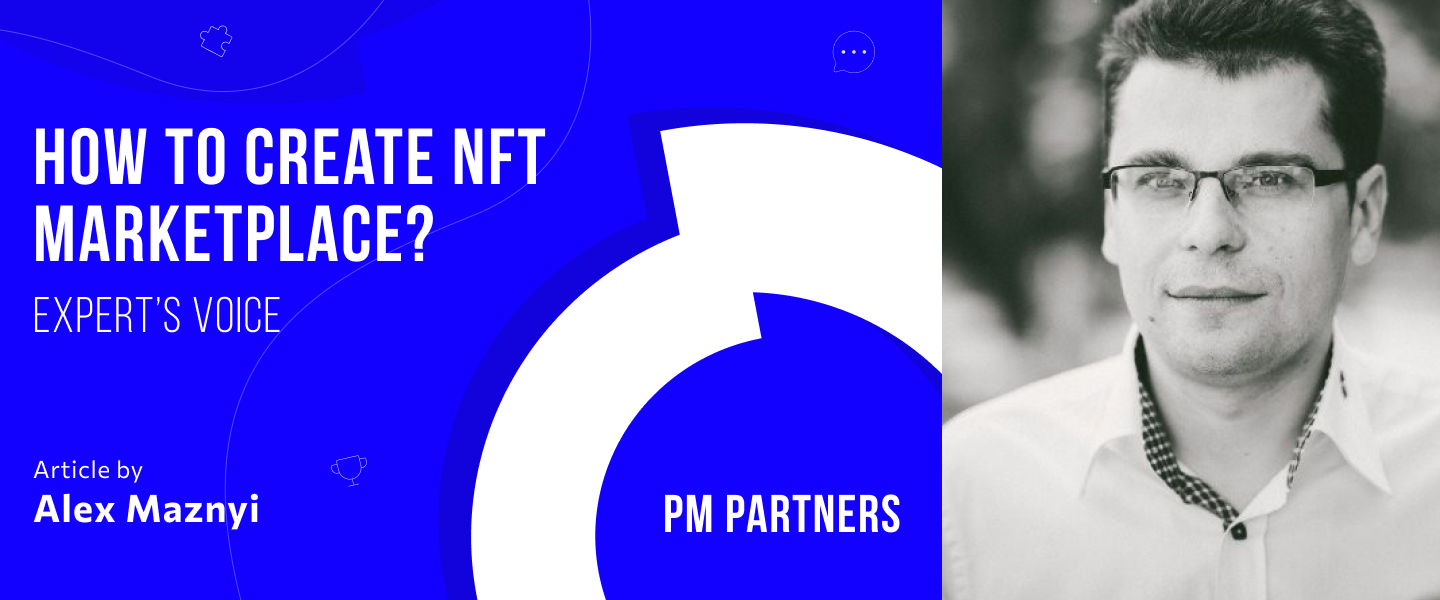
The ancient Greek writer Lucian of Samosata once said, “The beginning is half of the whole.” His words don’t lose their relevance even today, especially when it comes to the rapidly changing world of fintech and NFT. The most perspicacious even create their NFT marketplaces, new trading platforms with non-fungible tokens.
The most famous such platform is OpenSea, which brings its owners huge sums of money. In January 2022, this trading platform was valued at $13 billion, while OpenSea’s monthly revenue is $2.5 billion. So NFT marketplaces can be considered one of the most profitable areas of modern business.
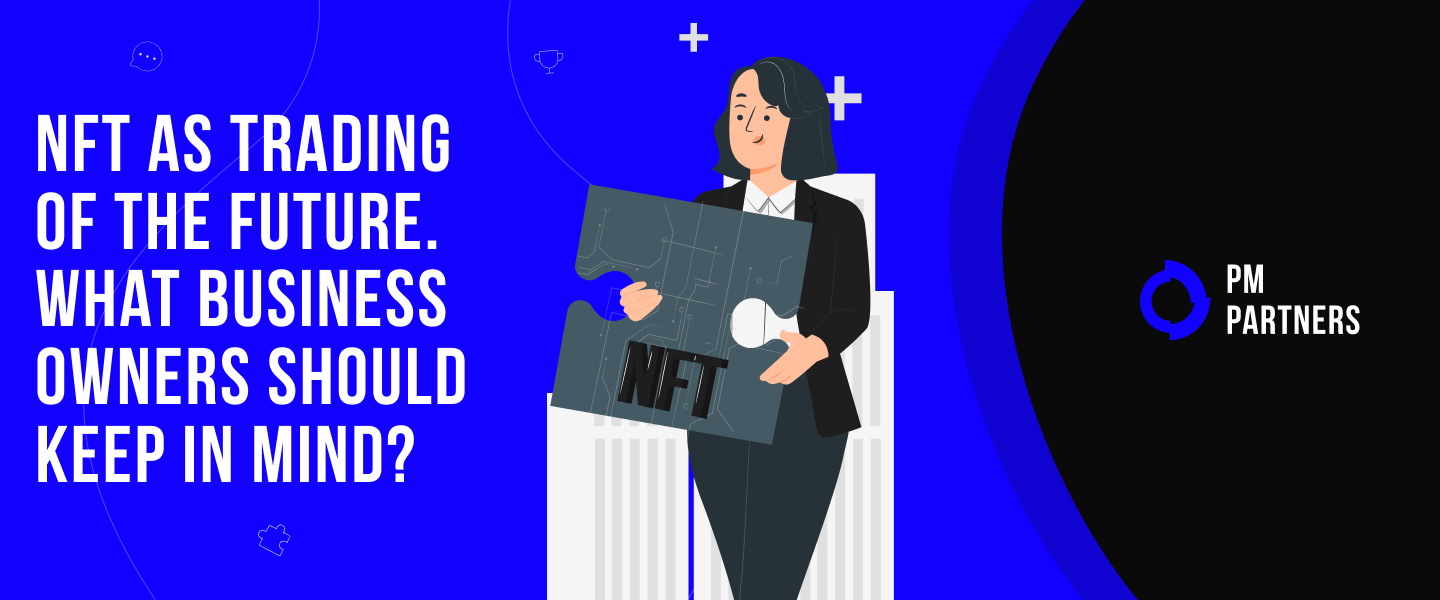
As you may already know, the NFT marketplace is a decentralized trading platform. On it, you can sell, create and store non-fungible tokens. This is a convenient tool for selling any digital assets. It does not matter whether it is digital works of art, video, music, texts, animation, games, or domains, they are convenient to trade on such a marketplace. However, the NFT marketplace is not limited to digital goods only. Here you can also buy various tokenized physical assets. It can be real estate, cars, collectibles, any furniture or appliances, and much more.
The principle of operation of the NFT marketplace is quite simple, you register on the platform and buy the desired product. The only difference with a regular store is that the purchase and sale operation on the NFT marketplace is secured by a smart contract. This means that all transaction data is stored on the blockchain, which in turn guarantees the security of the transaction. Sounds simple, doesn’t it? However, those wishing to create their own NFT marketplace may encounter some difficulties.
What you should always keep in mind:
First of all, it should be understood that NFT marketplaces operate on smart contracts. This is what causes the gears of this mechanism to rotate. It is when the smart contract is initiated between the seller and the buyer that the NFT transaction occurs. In other words, at this moment new data is written to the blockchain, and ownership of the asset is transferred. In addition, it is important to understand that all such smart contracts are self-executing. Simply put, they do not require a regulator or guarantor to validate the transaction, because they are automated.
You should always remember that you cannot just use fiat funds to work on the NFT marketplace. Since all purchases and sales take place on the blockchain, all transactions must be carried out using cryptocurrencies. Accordingly, if you want to create an NFT marketplace, you must either create your wallet or work with wallets that support NFT.
Also, do not forget that all transactions on the NFT marketplace are carried out without intermediaries, exclusively between the buyer and the seller. Accordingly, your platform should be responsible for selling through the blockchain and holding auctions. To provide all this, you will need to develop and test an automated auction system. By the way, testing must be of very high quality to meet all the requirements of security, simplicity, and reliability.
Smart contracts are a kind of “blood in the veins” required to work with NFTs. It should always be remembered that the cost of recording transactions can be quite high (up to $150 on Ethereum). Therefore, you will need to take this into account when developing your own NFT marketplace and add the appropriate functionality to both the smart contract and the interface. However, it is possible to implement the creation of NFTs without paying for gas, such an option, by the way, exists on OpenSea.
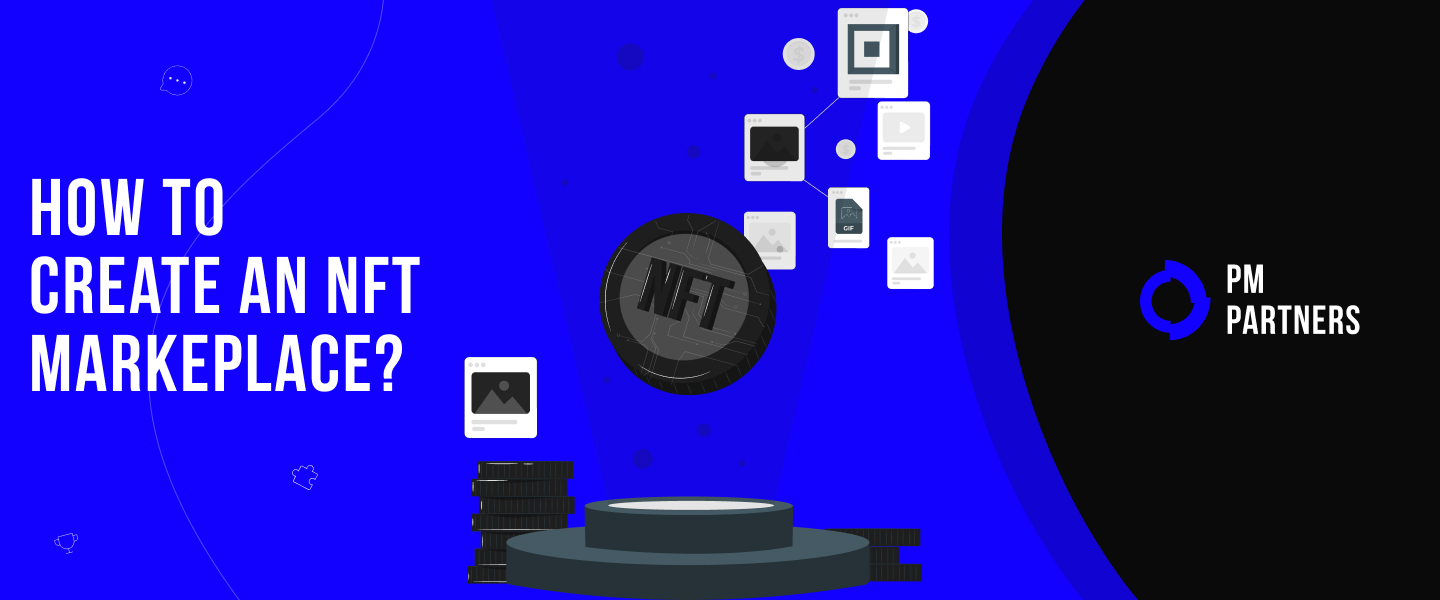
So, you have decided to create your own NFT marketplace, reminiscent of OpenSea. Where to start? We recommend that you, first of all, decide on the target audience of your platform, their needs, and the problems that need to be solved. In addition, you need to decide on the functions of the site and the overall business model. Only after these steps, you can start developing.
It would be not very reasonable to create a product that will try to compete directly with the market leaders. The NFT sector is already highly competitive and filled with many trading platforms. Try to find a relatively free niche, something that is not too hyped and heard. This will allow you to create a much better interface design and, most importantly, launch a personalized marketing strategy. All this will bring tangible savings in money and time to attract new users.
You can launch your NFT marketplace in a traditional stock market format. In other words, to accompany transactions of purchase and sale of securities and real assets. To implement the operation of such a platform, you need to obtain permission from the regulators to tokenize such assets.
Jewelry, branded clothing, luxury furniture, and other luxury items need to be protected from counterfeiting. Tokenization of luxury goods will provide an opportunity to guarantee the purchase of the original, confirming ownership and authenticity.
Another way to use non-fungible tokens is their role as access keys to content and various products. It is quite possible to trade such NFT assets on your platform.
Any courses, lectures, and lessons can be translated into NFT. After that, already in this form, they can be rented or sold. With the help of the blockchain, you can track their use and distribution, which will protect the owners of this information from theft.
The key to success in any business is professional performance. Creating an NFT marketplace is no exception, so we recommend that you take this issue seriously. There are two options for creating an NFT marketplace. The first is to hire a company for this purpose with experience, with expertise in developing such solutions, such as PM Partners. The second is to collect an in-house of your employees to develop a marketplace.
Each of these options has its pros. Let’s see closer to them.

The cost of project development on outsourcing, as a rule, is significantly lower.
The terms of work on the creation of an NFT marketplace are specified in the contract and are regulated
To create an NFT marketplace, you hire specialists with experience in similar projects.
Your contractor shares the risks associated with the development process. You can do routine things.
It is easier for your employees to set a task and clarify the details
Stable budgets and independent coordination with management. Everything happens internally—your company.
Nevertheless, it is worth noting that your employees do not always have enough experience to create a high-quality NFT marketplace. Not to mention the timing and cost of such a project. Therefore, it is best to contact a reliable partner to develop an NFT marketplace. In particular, we at PM Partners always strive to help clients implement the most complex projects and are ready to guarantee the best result because we value our reputation.
In any case, you should clearly know how your NFT platform will earn. OpenSea, for example, takes a 2.5% commission on every successful sale of a digital asset. In addition, NFT platforms usually charge sellers and buyers for gas. However, thanks to the transition to its blockchain, it is now entirely possible to create an NFT on OpenSea for free.
There are several ways to create your own NFT tokens. The easiest way to do this is by uploading the future product to one of the well-known marketplaces, such as Opensea or Binance. You will need the object itself, a cryptocurrency wallet, and some cryptocurrency to pay for the creation of the token. After that, the platform will simply generate a token for you by writing data to the blockchain.
However, you can also get away with the “gas” fee for creating and hosting your NFT by turning to other services, such as Treasureland. The approach of this platform is fundamentally different. You don’t pay to create an NFT or sell it. The only time you will be charged is if you decide to gift someone your token. In all other cases, the buyer covers all costs. So the possibility of creating a free NFT token can be an interesting marketing ploy and a kind of feature for your future platform.
It would help if you strived to ensure that your future NFT marketplace can work with all major blockchains. However, we do not live in an ideal world and know that their integration costs a lot of money, effort, and time. That is why we advise you first to implement support for one type of blockchain, and then gradually add all the others. To begin with, we recommend that you focus on Ethereum, as one of the most popular and in demand.
There are two types of trading platform users, they are buyers/sellers and administrators. Functions of administrators in managing the site, solving problems, and making settings. In turn, buyers and sellers are engaged in the purchase and sale of goods on the site. Therefore, it is extremely important that when creating your NFT marketplace, you understand what features each user group will need. To do this, you will need specialists who have created more than one NFT marketplace and can realize your desires to the maximum.
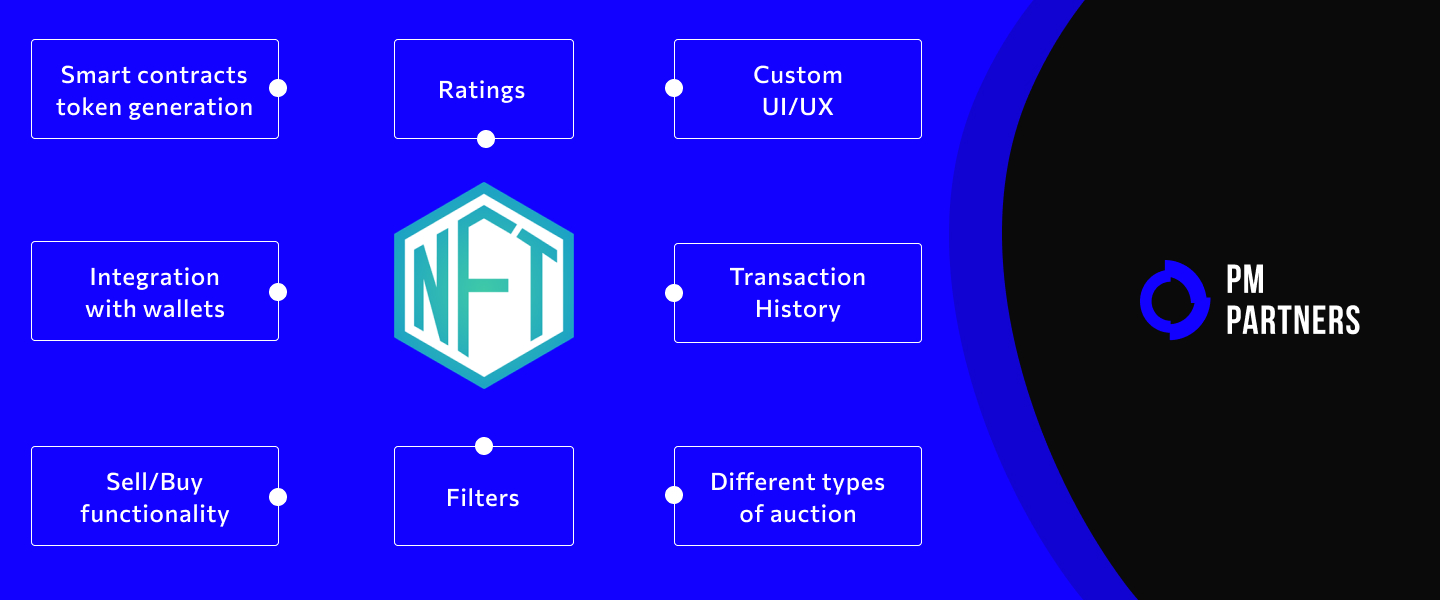
Your business card, the first thing that a person interested in your NFT marketplace sees is the UX/UI design. Work on it begins with prototyping, when designers brainstorm, exchange ideas, and create sketches and design concepts. Then it is tested on potential users. As a result, you get the information structure of your trading platform, as well as user interface prototypes.
So the UX/UI design is over and finally, you can start coding and building your NFT marketplace. First, you need to create a so-called MVP minimum viable product. With it, you will check the concept and operation of the future marketplace. As with a full-fledged platform, an MVP is built using tools and programming languages. Also, it is important to remember that for the front-end and back-end, as a rule, they use different programming tools and sets of languages.
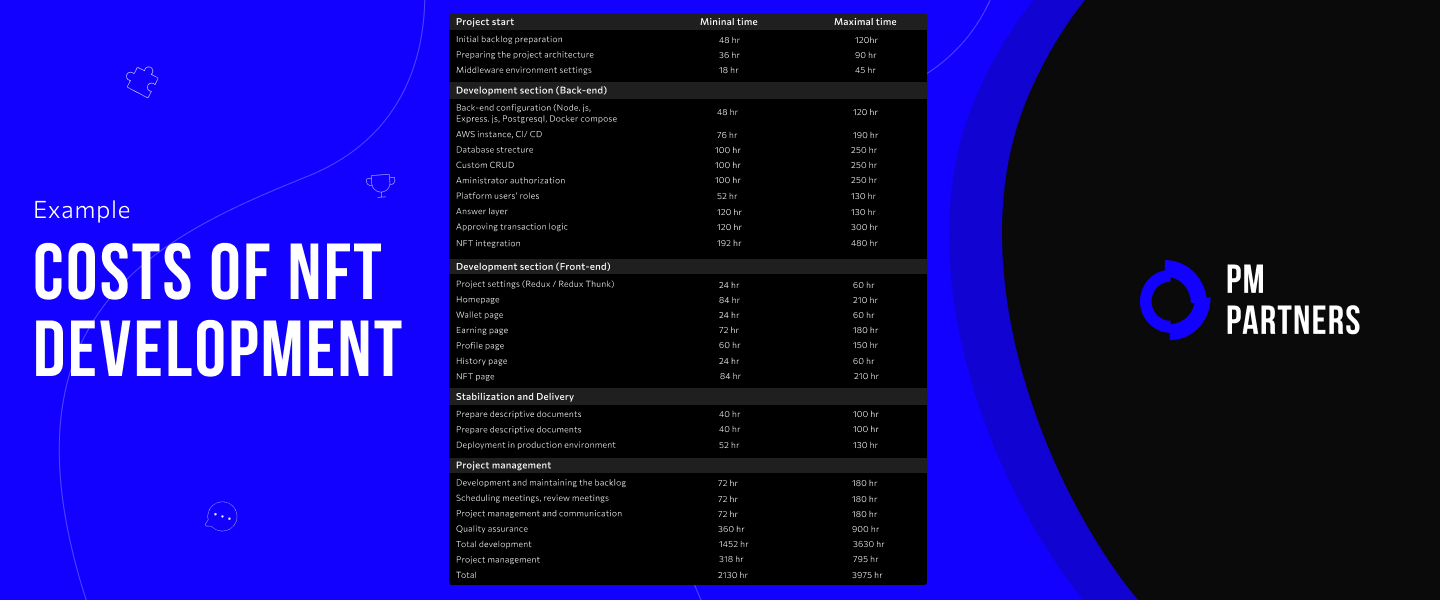
Immediately after deployment, the NFT platform can be made available to end users, but we do not recommend doing this. It would be better first to run a marketing campaign that would include bloggers and influencers, as well as influencers from the field that your marketplace is focused on. For the marketing campaign to be successful, we also recommend strengthening it with discounts, bonuses and NFT prize draws for the first buyers and sellers of your new platform. We also recommend that you launch an affiliate program.
For your NFT marketplace to become public, you should deploy it in the cloud or on a local server. To do this, you need to estimate in advance how many visitors your NFT marketplace can attract. It is based on these calculations that you choose a tariff plan that is suitable for your purposes.
Creating your own NFT marketplace, taking into account the experience of popular platforms, is a good strategy. Especially considering that NFT platforms are essentially the same e-commerce and there is nothing super complicated in this business. An NFT marketplace differs from any online store only in that we have an NFT token instead of a product, and all purchase and sale transactions are processed in the blockchain.
The main thing is to find your niche and develop a quality product, with which our PM Partners team will be happy to help you!